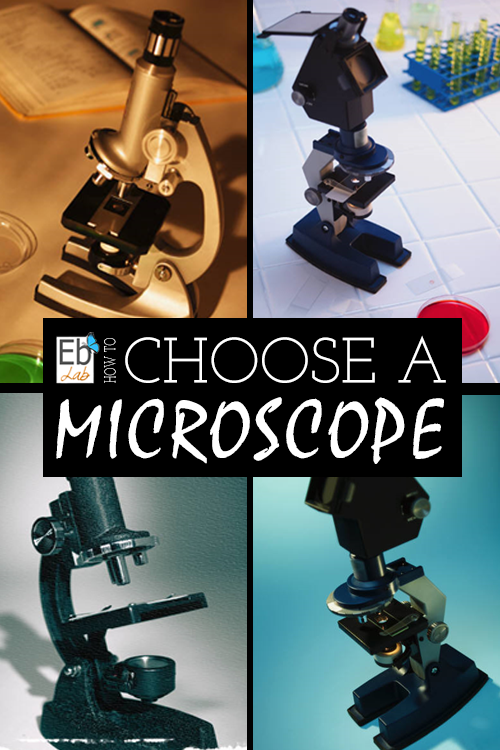 Looking through a microscope opens the doors to a normally invisible world for our students. Using one will help them to appreciate how complex life really is. However, choosing a microscope for homeschool use can be a bit daunting.
Looking through a microscope opens the doors to a normally invisible world for our students. Using one will help them to appreciate how complex life really is. However, choosing a microscope for homeschool use can be a bit daunting.
In this Science Corner, I’m sharing information on how to choose a microscope for homeschool science!
What should I look for?
When purchasing a microscope for homeschool use, look for the following specs:
- A compound monocular microscope;
- A microscope with 4x, 10x, and 40x objective lenses at a minimum (Note: The eyepiece should also give 10x magnification, which then will allow you to look at an object at 40x, 100x, and 400x magnification.);
- A microscope with separate coarse and fine adjustment knobs;
- A good light source. (Note: The best light sources are a LED or cool fluorescent bulb. Do not get one with mirror illumination as they are very difficult to adjust.)
We are currently using the DuoScope model, which is sufficient for most homeschool science applications. If you have more money in your budget, this home microscope is a good option. Also if you have multiple children who will be viewing the slides at one time, you might want to consider purchasing a digital scope.
You can purchase a good quality microscope at:
- Lab Essentials, Inc
- Children’s Microscopes
- Home School Science Tools
- Amazon
If you don’t know how to use a microscope, this website does a great job of explaining the process.
Should I get a cover or a case?
When you purchase the microscope for your homeschool it may or may not come with a cover or a case. If it does come with one, great, but if it doesn’t what do you need?
You absolutely must have a dust cover for your microscope! It will prevent dust from collecting in the eyepiece, stage, and light source, all of which can cloud your view of the slide.
Most high quality microscopes will come with a dust cover. However, if you lose it or yours doesn’t come with one, I recommend that you get a dust cover. You can buy one from Amazon for around $6 to $15 or you can make one. My daughter hand-sewed a dust cover for our microscope out of scrap fabric, which gave us an opportunity to work on her sewing skills.
You can also purchase a soft or hard case for your microscope. If you have invested a lot of money in your microscope, buying a case to protect it is a good idea. You should by a:
- Soft case if you are keeping it on a shelf and just taken it down to use;
- Hard case if you plan on transporting it at all.
What else do I need?
A lot of children’s microscopes come as a kit with the microscope, a cover, and some additional supplies. Here is a list of several additional materials that will be helpful (but not necessary).
- Prepared Slide Set
- Blank slides with cover slips (for making your own slides)
- Concave slide (for viewing small, but thick samples)
- Lens paper (for cleaning the lens)
- Petri or sample dish (for samples that are too large for a slide)
- Test Tube (for mixing samples)
- Non-toxic stain (for staining samples for easier viewing)
- Eyedropper (for making wet mount slides)
- Forceps (for collecting and manipulating samples)
Do you have any questions about selecting a microscope for homeschool use that I didn’t cover? Be sure to come back in two weeks for more information about how to use a microscope in the homeschool science!
 Sign up below to receive weekly tips & tools for homeschool science and we'll send you a FREE copy of
Sign up below to receive weekly tips & tools for homeschool science and we'll send you a FREE copy of 
[…] weeks ago I shared about how to choose a microscope for homeschool use. Today I want to give you few ideas for using your new microscope for homeschool […]